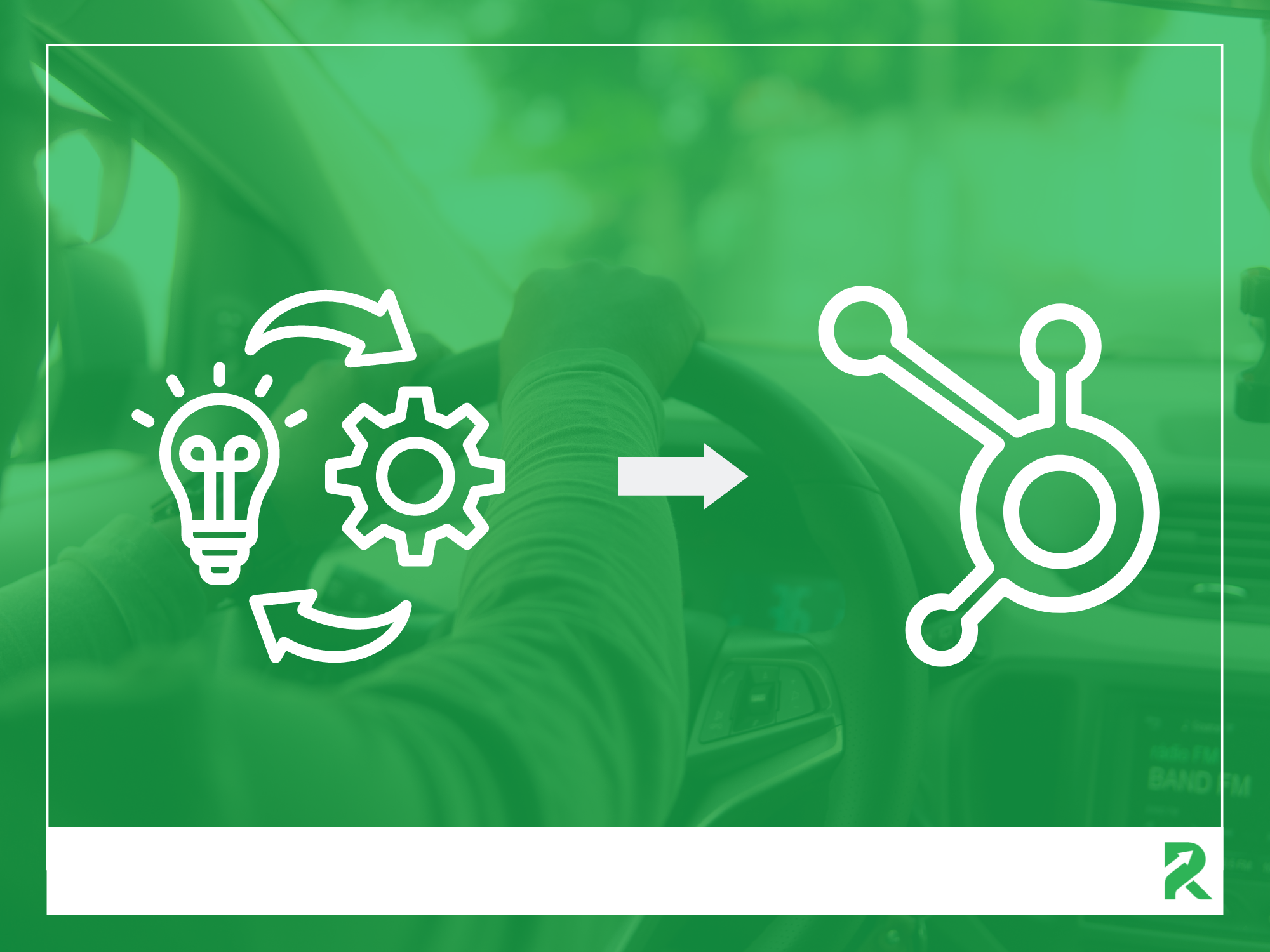Table of Contents
Organizations are constantly searching for ways to grow their revenue and stay ahead of the competition. One strategy that has been gaining popularity is revenue operations. By aligning marketing, sales, and customer service teams with the goal of maximizing revenue, businesses can create a seamless customer experience that drives growth.
Let’s take a look at how to implement revenue operations in HubSpot, the new high flier in the CRM world.
TL;DR: How to Implement RevOps in HubSpot
-
Align teams to revenue: Connect sales, marketing, and service around shared data and goals
-
Centralize everything: Use HubSpot’s CRM to unify contacts, deals, and workflows
-
Automate smartly: Trigger emails, tasks, and updates based on customer behavior
-
Clean before you build: Start with reliable, structured data for accurate reporting
-
Integrate your stack: Connect HubSpot with your other tools to eliminate silos and gaps
Ready to get started? Begin with HubSpot’s Free CRM
(Affiliate link: if you sign up, we may earn a commission at no extra cost to you).
What Does Revenue Operations (RevOps) Do in HubSpot to Drive Growth?
Revenue operations (“RevOps”) is a strategic approach that empowers organizations to make data-driven decisions and drive growth by breaking down silos and fostering collaboration across departments.
But what exactly does revenue operations entail? It goes beyond simply aligning sales and marketing teams. Revenue operations encompasses a holistic approach that integrates all customer-facing departments, including sales, marketing, and customer service. By bringing these teams together, businesses can create a seamless customer experience and drive revenue growth.
Maximizing Revenue with HubSpot
HubSpot serves as the central hub for all customer-related information. By utilizing its robust features, businesses can gain valuable insights into their customers' behaviors, preferences, and interactions. With this information at hand, teams can implement targeted marketing campaigns, identify sales opportunities, and provide exceptional customer service – all with the ultimate goal of maximizing revenue.
One of the key features of HubSpot is its ability to track and analyze customer interactions across multiple channels. From website visits to email opens, HubSpot captures every touchpoint, allowing businesses to understand their customers' journey and tailor their strategies accordingly. This level of visibility enables teams to deliver personalized experiences that resonate with customers and drive conversions.
To unlock advanced reporting, attribution, and campaign management, explore HubSpot Marketing Hub
(Affiliate link: if you sign up, we may earn a commission at no extra cost to you).
Navigating HubSpot Objects and Properties
Understanding the different objects and properties in HubSpot is crucial for effective revenue operations. From contacts and companies to deals and tickets, each object represents a specific entity that plays a vital role in your revenue generation process. Mapping out the relationships between these objects and configuring their properties correctly ensures that you capture all the necessary data to drive revenue growth.
For example, the contact object in HubSpot contains valuable information about individual customers, such as their contact details, interactions, and preferences. By properly organizing and categorizing this data, businesses can segment their customer base and target specific groups with tailored marketing campaigns. This level of granularity allows for more personalized and effective communication, leading to higher conversion rates and increased revenue.
Streamlining Your Workflow with HubSpot Automation
A key component of revenue operations is streamlining workflows to save time and increase productivity. HubSpot's automation tools allow businesses to automate repetitive tasks, such as lead nurturing, email campaigns, and deal creation, freeing up valuable resources for more strategic activities. By automating these processes, you can ensure that every interaction with leads and customers is timely, personalized, and aligned with your revenue goals.
But HubSpot's automation capabilities extend beyond basic task automation. With its advanced workflows and triggers, businesses can create sophisticated automation sequences that adapt to customer behavior and preferences. For example, if a lead visits your pricing page multiple times, HubSpot can automatically trigger a personalized email with a special offer, increasing the chances of conversion. This level of automation not only saves time but also enhances the customer experience, leading to higher customer satisfaction and loyalty.
Integrating HubSpot with Other Tools for Seamless Operations
HubSpot's ecosystem includes a wide range of integration options, enabling businesses to create a seamless operating environment. Integrating HubSpot with tools such as marketing automation platforms, sales enablement software, and customer service platforms maximizes the efficiency and effectiveness of revenue operations. Streamlining your tech stack ensures that data flows effortlessly between systems, providing a holistic view of your customers and enabling informed decision-making.
For example, integrating HubSpot with a marketing automation platform allows businesses to automate lead nurturing and scoring, ensuring that leads are properly nurtured and handed off to sales when they are ready to make a purchase. This integration also enables marketing and sales teams to have a unified view of the customer journey, aligning their efforts and improving collaboration. By integrating various tools, businesses can create a unified and efficient revenue operations ecosystem that drives growth and success.
Step-by-Step Guide: How to Implement Revenue Operations in HubSpot
Phase 1: Data Cleaning and Importing in HubSpot
Before embarking on your revenue operations journey, it's essential to ensure the cleanliness and accuracy of your data. This includes cleansing your existing data and importing it into HubSpot, making sure that all information is correctly mapped to the relevant objects and properties. By starting with clean and reliable data, you can lay the foundation for effective revenue operations.
Data cleaning involves removing duplicate records, standardizing formats, and validating information. This process ensures that your CRM is populated with accurate and up-to-date data, enabling your teams to make informed decisions and take targeted actions. Importing the cleaned data into HubSpot allows you to centralize your customer information, providing a holistic view of your prospects and customers.
The HubSpot Starter Platform gives growing teams affordable access to the core CRM features they need for clean, structured data
(Affiliate link: if you sign up, we may earn a commission at no extra cost to you).
Phase 2: Mapping Your Customer Journey with Automation
In this phase, you’ll dive deeper into HubSpot's automation tools and map out your customer journey. By identifying touchpoints along the buyer's journey, you can create automation workflows that deliver personalized and timely messages to your leads and customers, nurturing them through each stage of the sales funnel. This strategic use of automation ensures that you provide value at every step and move prospects closer to conversion.
Mapping your customer journey involves understanding the different stages your prospects go through, from awareness to consideration and decision-making. By aligning your automation workflows with these stages, you can deliver relevant content and offers to your leads, increasing engagement and driving conversions. Automation also allows you to track and analyze customer interactions, providing valuable insights for further optimization.
Phase 3: Building Effective Marketing, Sales, and Customer Service Processes
Now that you've laid the groundwork with clean data and automation workflows, it's time to optimize your marketing, sales, and customer service processes. This includes designing effective lead generation campaigns, implementing lead scoring systems, and aligning your sales and customer service teams to provide a seamless experience. By continuously monitoring and optimizing these processes, you can ensure that revenue operations remain at the forefront of your organization's growth strategy.
Effective marketing processes involve creating compelling content, leveraging various channels to reach your target audience, and measuring the success of your campaigns. Lead generation campaigns should be designed to attract and capture qualified leads, while lead scoring systems help prioritize and qualify prospects for your sales team. Aligning your sales and customer service teams ensures a smooth handover of leads and provides a consistent experience throughout the customer journey.
Summing it Up
Implementing revenue operations in HubSpot is a transformative journey that can revolutionize the way you drive growth and generate revenue. By leveraging HubSpot’s robust capabilities and following the step-by-step guide outlined, you can build a scalable revenue operations strategy that sets your business on the path to success.

.png)
.png)

